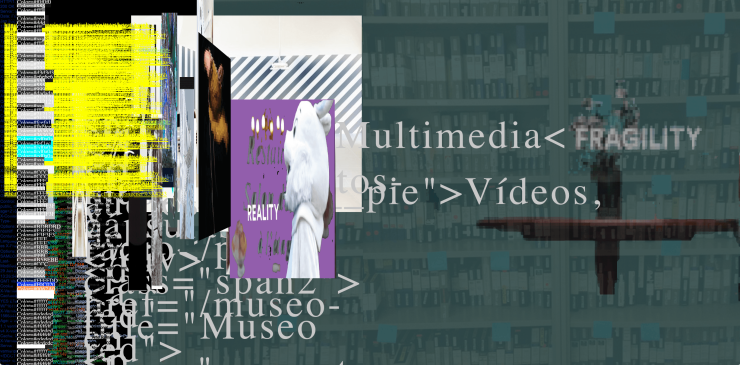
Location
Valencia, SpainDate and time
-The 2nd International Conference Hybrid Aesthetics of the Moving Image: Heritage and Identity is a meeting point for the diverse disciplines involved in the study of new media, video art, visual studies, aesthetics, identity and critical theory, as well as new strategies for audiovisual preservation.
----------------------------------------------------------[https://eshid.webs.upv.es/en/home-en/]----------------------------------------------------------------
It is an initiative of the R&D project MICIU EShID: Hybrid Aesthetics of the Moving Image. Spanish video-art and identity dynamics in the global map (2019-2021), focussed on research, knowledge transference and diffusion of audiovisual artworks made in Spain from Ares Archive. Aesthetics, identities and audiovisual practices in Spain; and the research group Visu@ls. Visual Culture and Identity Politics. After the first edition, held November 2020 at the Faculty of Philosophy of the University of Salamanca and centred on the theme of migration, globalization and interculturality, the Polytechnic University of Valencia takes over for this year’s edition.
This meeting intends to generate critical thinking between researchers and professionals from different disciplines related with videoart at an international level. Videoart is understood as a resource that can generate identity, as a media able to be technically reproduced and as a challenging type of heritage, affected by obsolescence and fragility. This broad panorama ranges from the production of imaginaries, such as the visualization of intimacy and gender roles through contemporary audiovisuals in the “image-world” we inhabit today, to the conflicts that arise in cultural and educational institutions when cataloguing and preserving the social memory of videographic practices. We could speak, then, of a double nature of video art: one that directly affects the construction of identity that creates and projects collective imaginaries, and, on the other hand, a mediological identity that investigates the effects of technological innovations in the field of heritage.
Part of the conference will focus on discussing video art as a construction of identity, as a tool for inclusiveness, analysing the relationship between video and issues of indisputable social relevance such as feminism, sexual and gender diversity. The relationship between video art and the new instrumental strategies of conservation will be, therefore, the second major topic of debate of the event, through which it is intended to establish a certain consensus that facilitates the decision-making process related to this type of works increasingly common in our institutions. This is a complex issue that has gained international relevance in the field of conservation and restoration in recent years. The themes proposed are structured along four lines:
VIDEO, AESTHETICS AND IDENTITY
Microelectronic registers and possibilities of artistic intervention in the space of the “global village” making identity issues visible.
FUGACITY, IMMATERIALITY AND PERFORMATIVITY
Audiovisual as a present doer practice in the “network culture society”.
OBSOLESCENCE AND REPRODUCIBILITY
Mediological identity of video art vs. heritage.
PRESERVATION STRATEGIES
Seeking possibilities and relevance against semantic obsolescence.
These lines are structured around two major subject axes -Identity and Heritage- on which the reflections of the participants in the communications will be based. At the same time, a Creative Room will be held in the Josep Renau Exhibition Hall of the Fine Arts Faculty of the UPV, where both, selected videos from the conference, and from the ARES Archive. Aesthetics, identities, and audiovisual practices in Spain –part of the R&D Project EShID. Finally, posters related to the thematic lines linked to Heritage will also be selected.
Organize: Proyecto MICIU de I+D+i EShID: Estéticas híbridas de la imagen en movimiento. Videoarte español y dinámicas identitarias en el mapa global (2019-2021), Archivo ARES. Estéticas, identidades y prácticas audiovisuales en España, Facultad de Bellas Artes de la Universidad de Castilla-La Mancha, Facultad de Bellas Artes de la Universitat Politècnica de València. Reference: PGC2018-095875-B-I00